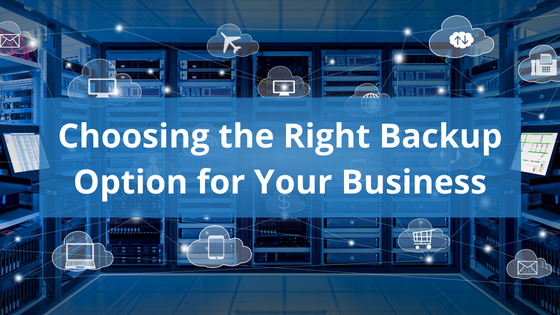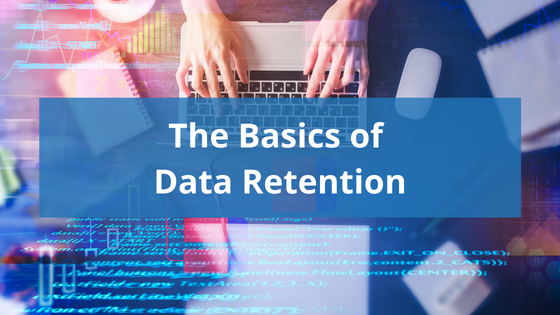Everyone has experienced writing a report, spending several hours on it, and then closing out or suffering a crash before saving your work. When this happened to you, you probably experienced an overwhelming sense of dread. Would you have time to re-type the whole report? Would you remember what you had already written? Afterward, you probably felt a need to hit "save" every five minutes for important documents out of fear it would happen again. Now think about every file on your device, or every file in your company, becoming inaccessible due to cyber-attacks, user error, or some other issue.
That is where your backup solution comes in. Backing up your data each day is like hitting "save" every five minutes on an important report. Backups give you peace of mind and ensure your ability to continue working in the wake of an incident. There are a lot of factors to consider when choosing a backup solution, and we want to help you understand the different types of backup options available to you.
On-Site Backups
On-site data backups allow you to maintain full control over your data. The ability to choose how much data you store, flexible retention periods, and quick recovery time are some advantages on on-site storage. However, you also must pay for the hardware and the cost of maintenance. You are also responsible for keeping copies of your data stored securely in a secondary location and run the risk that environmental emergencies (floods, snowstorms, etc.) can damage your server and make data recovery difficult or impossible.
Cloud Backups
Cloud-based backups store data online and don’t require you to host a physical server. This can reduce your costs if you choose not to maintain and power a server. Cloud-based backup solutions are great for organizations that want to fully automate their backup systems or need the ability to quickly increase the amount of storage available to them. On the other hand, not maintaining full control of your data leaves your organization vulnerable. Reliance on a strong internet connection can cause a delay in recovery time, which may prevent your becoming fully operational immediately following a critical incident.
Additional Cloud-Based Backups
Chances are if you are familiar with the cloud it is because you already use Office 365, Google Drive, or another cloud service at your organization. The cloud has changed the way people work, making it easier to share files, access them from anywhere, and feel confident that data and email files will be recoverable in case of an emergency. While it is true that there a basic level of security comes with using cloud-based applications, it is probably a good idea to use a more robust cloud-based backup solution as well. Even with cloud solutions, you run the risk that cyber-attacks and user error can compromise your data. Based on retention policies and storage space, you could lose important data if you don't catch a problem in time. When a secondary backup solution is put in place you have more control over restoration and can feel confident that you are following technology best practices.
No matter your backup solution, you should be backing up your data every day. It is important that you assess your storage needs, compare different solutions, and work with an IT professional to implement and manage the backup solution of your choice. If you have any concerns about your current backup solutions or would like an assessment of your organization's IT, contact us.






Leave a Reply